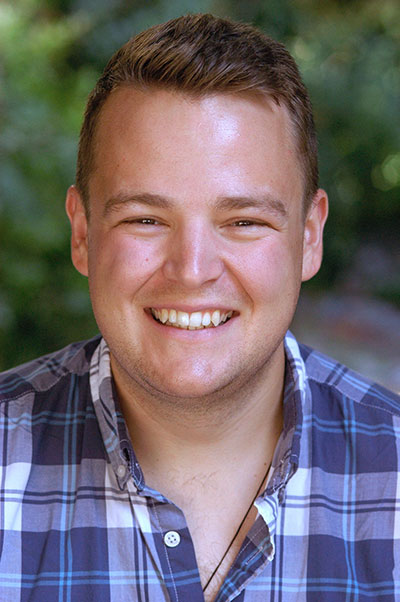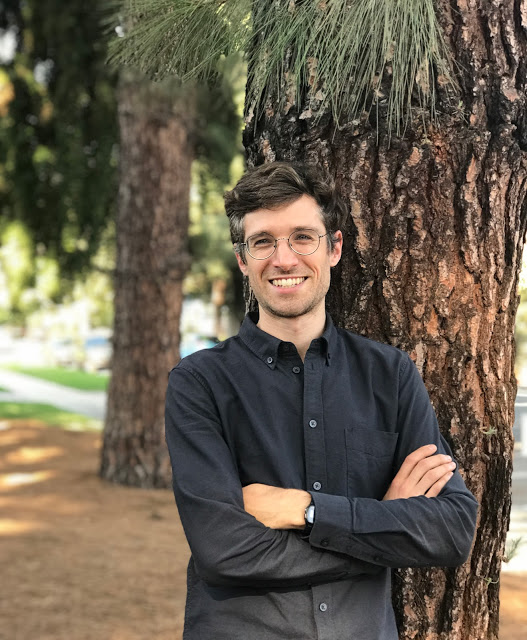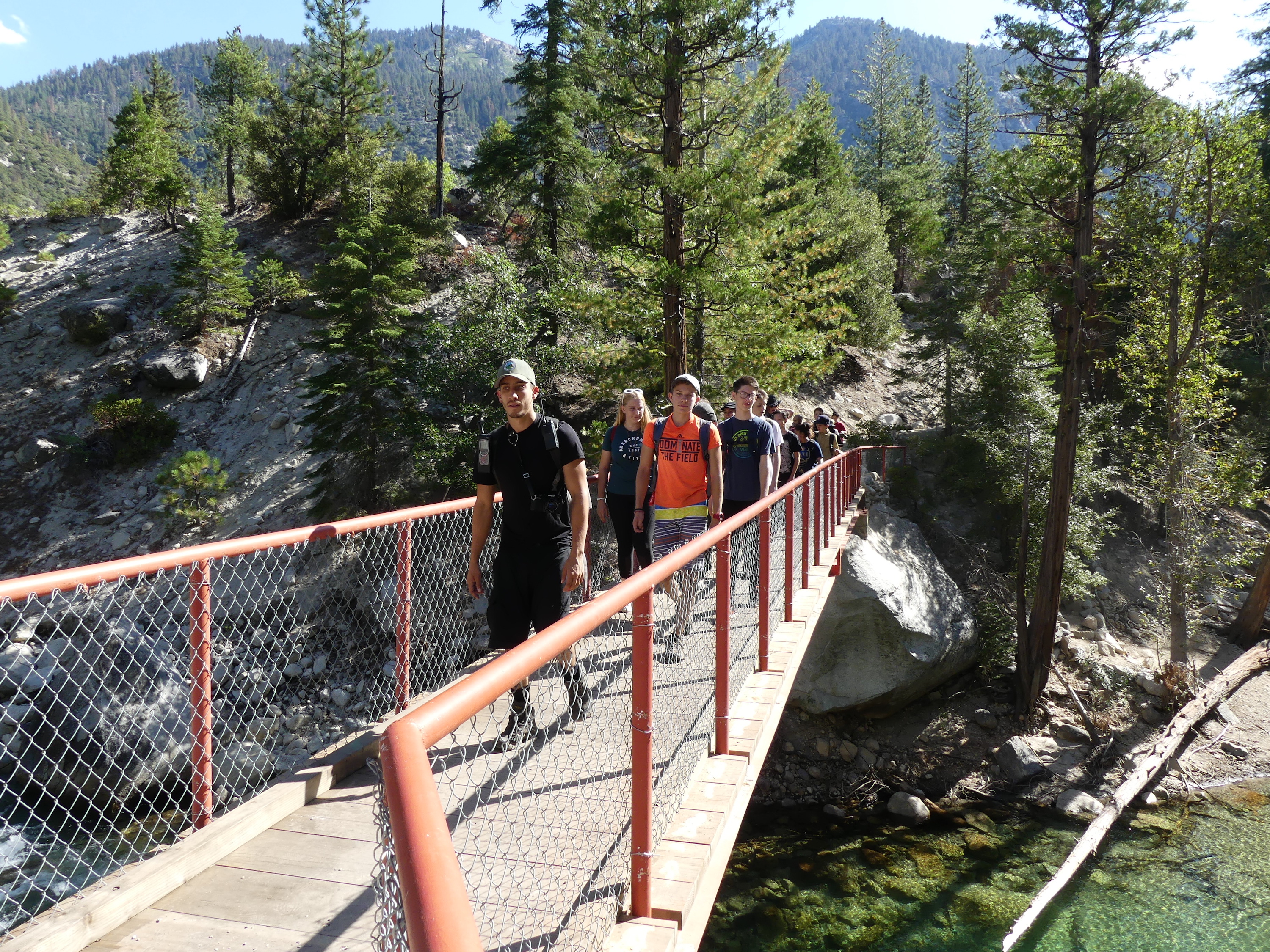
Ilan Vaisman, one of Sequoyah High School’s new Spanish teachers, as a kid. (Ilan Vaisman)
Not only the student body but also the faculty has doubled in Sequoyah High School’s second year. This has created a new diversity of perspectives for students to take advantage of. Eleventh-grader Grantland Unterseher said that the new teachers have “added a lot to the Sequoyah community by giving differing opinions on topics.”
Ilan Vaisman
These opinions derive from the new faculty’s diverse life experiences. The story of Ilan Vaisman, the new Spanish teacher covers multiple continents, languages, and religious influences.

Vaisman grew up, in his own words, “a very privileged, recreational, carefree, and for lack of better words, fun kid.” He was raised in Cali, Colombia, but also enjoyed the countryside where he had a vacation house. It was by the mountains of Colombia and he was exposed to an open patch of land, horses to ride, and trees to climb. He described himself as a “wild hyperactive monkey,” and in a picture of him as a boy of 12, there he is, a short boy with an ear-to-ear grin, frozen in a laugh.
Vaisman did come to experience some harsh moments. Close family friends suffered due to the drug-fueled violence of the 90s in Colombia, including his mother’s friend who was killed during a mugging. He himself was not physically affected, but his family decided to move to Israel, a decision that he half-jokingly said “traumatized” him. Israel was an area where Vaisman’s family, who were Jewish, felt safer, but he was only twelve at the time and felt he knew little of the culture of the Jewish state. He was raised Jewish, and believes that Judaism brought his family closer, especially during the meals eaten in observance of religious holidays. Jewish beliefs did not stick with Vaisman, though, and he now strongly believes that religion is less a unifier, as it was for his family, and more a divider for people around the world with different practices. He did learn Hebrew in Israel, one of the five languages he speaks now, and realized that he wanted to pursue higher education, which led him to teaching.
He was drawn to language for its similarity to performing—dressing up, and making music. From the ages of eight to ten, he would choose a number from the international phone book, make phone calls around the world, and just listen in awe at the different languages people spoke. His fascination with language was rooted in his adolescence and sprouted more in college, where he earned a double major in economics and Romance languages.

Marisol Perez
Spanish 2 and 3 teacher Marisol Perez is another teacher adding to the comforting feeling of Sequoyah, according to students. Freshman Adela Villalba described her experience with Perez as a powerful story of rediscovery. She said “she is so passionate about what she does” and that while being taught she is also seeing the cultural relevance in her teaching. Villalba also noted Perez taught her more about her culture and has now expanded her perspective. Perez, at least for Villalba, has helped shape how students perceive themselves inside and outside the classroom.

Melinda Wilder
At Sequoyah, teachers play many roles in the student’s life, such as Melinda Wilder, the high school precalculus teacher, who is also the assistant volleyball coach. Wilder grew up in South Korea, hiked up the preserved natural mountains and experienced the wonders of the country. She had an early idea of what she wanted to do and was sure she wanted to learn more about international schools, which was where she got her education when she was younger. Her experience in international schooling helped her realize that she wanted to teach in one of those schools. She then started teaching in South Korea when she was 23. Later, she moved to Missouri to study and earn her degree for teaching.
Because Wilder grew up overseas, she missed out on much of the growing importance of pop culture in America. When conversations about TV shows or the latest movies came up, she was often lost. When asked whether she had interest in catching up on all that pop culture, Wilder paused. She had never really thought of it as a major loss. Wilder is the kind of person that cares about her education more than anything else.

Justin Thompson
Sequoyah’s new hires also increased the school’s geographic diversity. Justin Thompson, Sequoyah’s new high school chemistry teacher described his childhood as: “Driving through corn fields, going fishing and hunting. All of us having trucks and jeeps and driving around dirt roads, was what we did after school.”
As a kid, Thompson had space and room to be independent. Thompson grew up on a farm in an agricultural county in southwest Virginia. It was surrounded by cows, goats, horse, chickens, and more animals. His parents owned the farm and lived on a dirt road, where in the summer his mom would put him outside and lock the door.
His life called for independence, which matched his calm, laid-back, introverted personality and his favorite color, blue. In college his independence sprouted even more. He studied in Asheville, North Carolina, and was away from his parents which lead him to some new ways of living. He biked more, and in spite of his ex-girlfriend, became a vegetarian because she hated the idea and, due to growing up on a farm, the animals became more like pets than food. He has proudly held onto that idea for nine years and has never looked back.
He fell into teaching in his sophomore year of college, when he lead backpacking trips as an outdoor leader. In that role he found himself breaking out of his shell. He pursued a major in chemistry and then later his master’s in teaching.
He was then offered a position at Christ School, a boarding school in Asheville, which became his first job in his teaching career. Despite his introversion, he found he could stand in front of a class and command the room. Teaching, he said, was a different expression of himself, a performance–tiring yet enjoyable.
Sequoyah, he says, was the change of location he was looking for. Other than a location change, he also liked the process of learning that Sequoyah offered.

Julian Petri
Julian Petri, Sequoyah’s new tenth-grade Humanities teacher, told me about a dilemma he tells every new class about. Petri tells the class an out-of-control trolley is hurtling towards five people, but asks the class if they would switch the tracks of the trolley, hitting the one person working on the other side, or if they would do nothing and let the five people inside die. He left me with that pondering question.
In addition to that situation, he told me about another: I would be overlooking a bridge and am blind to the separate track. Next to me is a man. If I push him he would derail the trolley and only he would die. Petri noted that when you ask yourself what the right thing to do would be, we often feel like we know, but when we look at our decisions more closely, we are shown how conflicted we actually are. It, for him, raised the question “then how do you know what the right thing to do would be?” He wants his students to think about what the right thing to do is and how they conclude something is “right” or “wrong.”
Petri said he is a skeptical person, a person who has accepted the fact that we can not always trust our gut choices. He said his skepticism also comes from the way he was raised. Growing up in different cultures, from a “hippie commune in Germany; to a preppy, stuffy, rich, boarding school in the Northeast of America; to a ranch called Deep Springs which was a self-governed college where students hired the teachers and ran the classes” really showed him how different areas can be so right in their ways and not know of any other way, just accepting the way they do things. These experiences molded the questions for him: “How do I live my life?” and “How do I think for myself?” He believes that is what teaching is about and he saw this come to life at Sequoyah, which drew him here. Petri said his favorite color is “green, because it is the color of burgeoning life.”
According to students, Petri is most definitely one of the teachers that has made the Sequoyah community a warm and comfortable place for students. Tenth-grader Sophia Barrera said, “Julian has shaped a bit of the community for me because he really has allowed me to open myself up more about my situation at home, and I’m more willing to talk in his class because of the way he has shaped the class.” Barrera added that “his sense of humor” has “really shaped the community for a lot of kids…. He’s shown me, in more ways than one, that I can share, and that he’s more than happy to share back his thoughts.”

Sean Hamidi
In addition to Petri, Sean Hamidi, the ninth-grade Humanities teacher has also played a big role in comforting his students. Andrea Bizzaro, a freshman, described her experience with Hamidi, saying he has “brought a sense of gratitude to the Sequoyah community” and “starts every day with a positive attitude.” Bizzaro added, “As an advisor, he definitely cares for the group and makes sure he does his part in making each and every one of us successful students especially for our freshman year.” Hamidi “always checks in with us” and “makes sure we are in a good mindset for the rest of the day and week,” said Bizzaro.

Peter Wallis
Peter Wallis, the high school’s visual art teacher, has been a major influence on the way students perceive Sequoyah’s efforts in created a serious environment. Tenth-grader Eddie Gonzalez said Wallis “really stands out” and has “really motivated me to keep hard at my work and has shown me the importance of staying true to my word.” Gonzalez added that Wallis “really embodies the Sequoyah spirit.” Eamon Ennis, a long time Sequoyah student, spoke highly about Wallis and the way his class created a great feeling for him. Ennis said: “Peter is one of the new teachers at Sequoyah but he has already captured the spirit and shown us the artistic experience.” Ennis also said Chelsea Confalone, the high school biology teacher, and Wallis’s “high energy when teaching and just walking around makes my Sequoyah experience that much more lovely.”
Brian Eagen
This year, Sequoyah hired a couple of new staff members for the field studies department, such as Brian Eagen, the new field studies director. Geo Wood, a freshman who has been at Sequoyah since kindergarten, said Eagen has changed camping at the school for the better. She said the trip to Kings Canyon National Park in August “had such a different vibe” than others she has been on with Sequoyah. “The trip seemed much more focused around nature and bonding opposed to the old trips which were usually based around one specific thing.” She said she enjoyed this trip much more because she preferred the structured way Eagen planned it, rather than the work-loaded K–8 trips.
Eagen has travelled to all 50 states and 34 of the 59 national parks. He said he has come to Sequoyah ready to teach students a valuable lesson: “There are three types of fun. Type One Fun is when you’re doing something and have fun doing it. Type Two Fun is when you’re doing something and it’s not fun in the moment but you learn a lot and look back very fondly on those experiences. Type Three Fun is when you’re doing something that isn’t fun and you look back on it and still think it was the worst. Type Two Fun is where it’s at.”








